Watchmen Background
The Rorschach Test
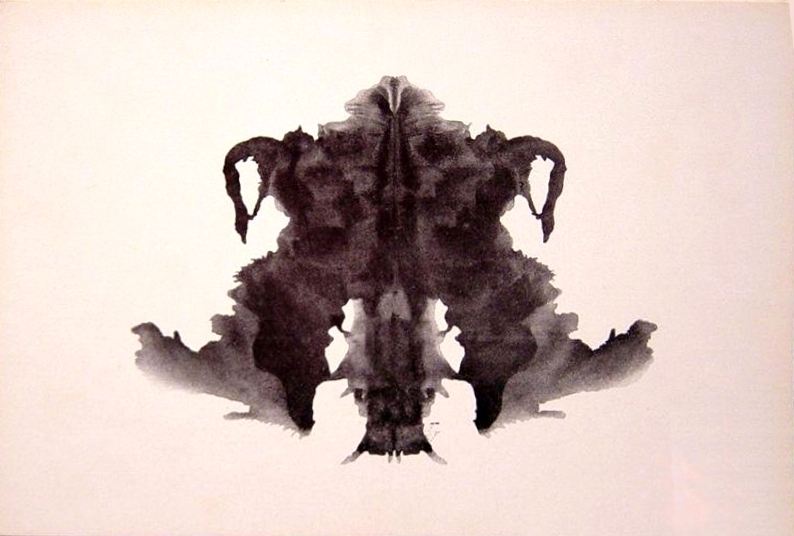
The Rorschach Test is a projective personality test, where a subject responds to ambiguous stimuli, revealing internal conflicts and hidden emotions. It is made up of a series of 10 symmetrical inkblots where the subject states what they see. The subject's perceptions are analyzed by a trained psychologist. In general, what the subject sees is something meaningful to them at some level.
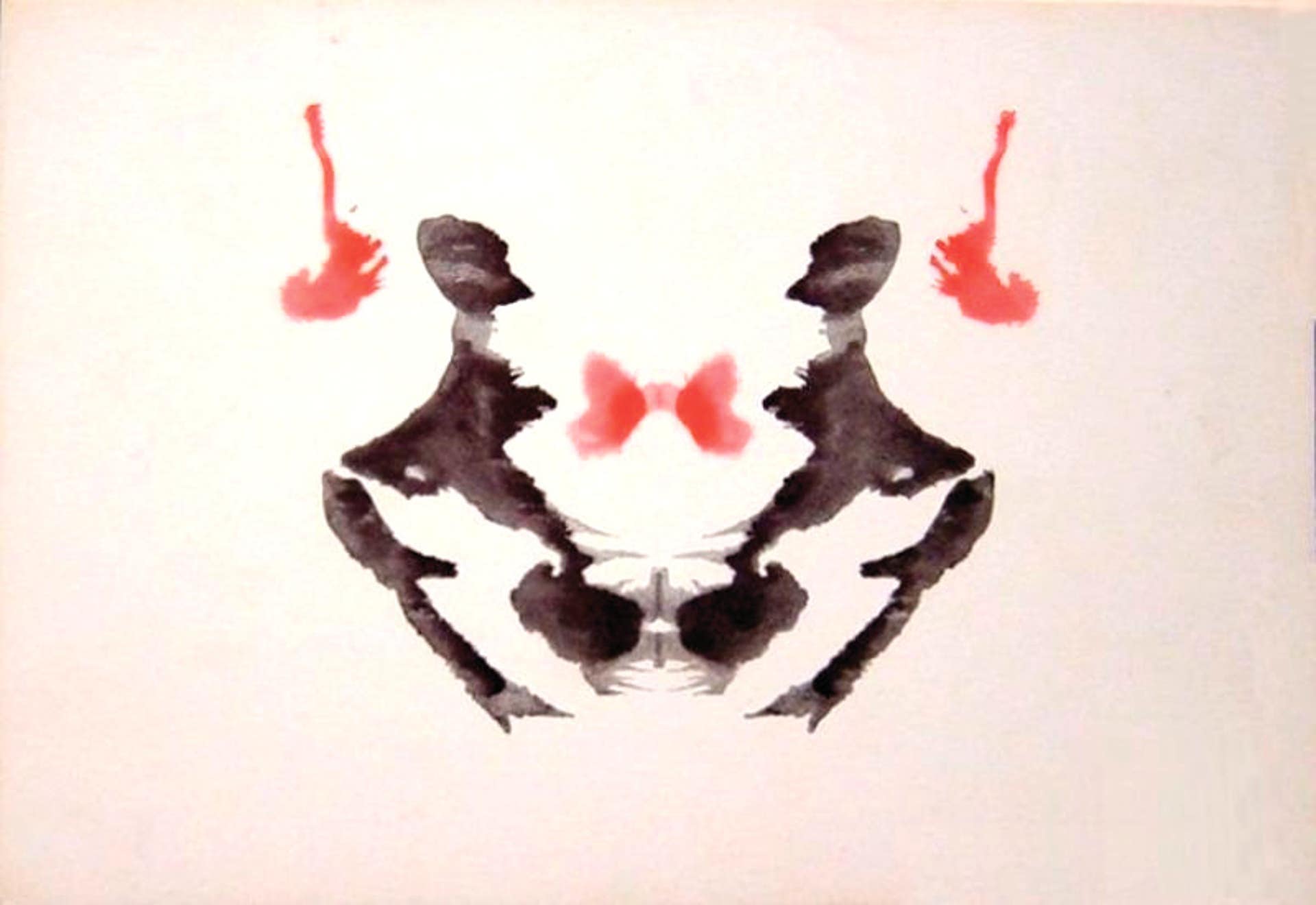
Interpretation of the Rorschach test is not based primarily what the subject sees in the inkblot. That's only a small portion of other factors that are used. These include the category of the object that the subject describes (e.g., human, animal, nature, abstract, etc.), time taken before responding to the card, any comments the subject might make on the card, how much of the inkblot the subject considered in their answer, and more.
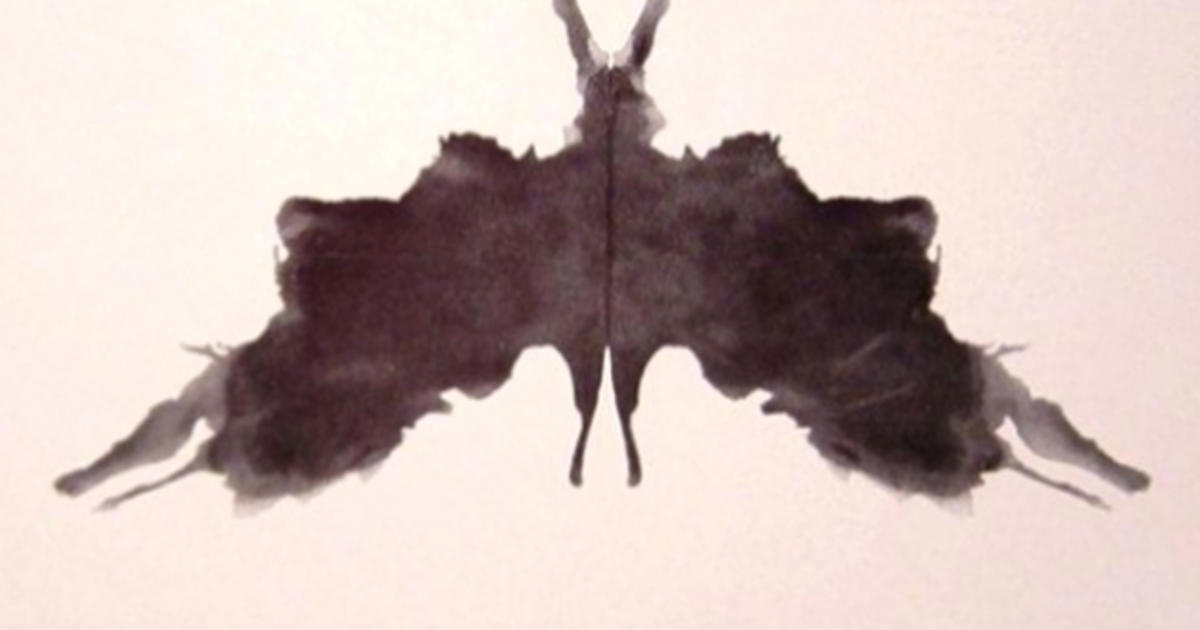
The test was developed by Hermann Rorschach in the early 20th century, after he analyzed the responses of 300 institutionalized mental patients and 100 control subjects. Rorschach himself doubted its use as a projective test, because he used it as a tool to diagnose schizophrenia. But by 1939 its primary use was to offer generalized personality profiles.
MAD - Mutual Assured Destruction
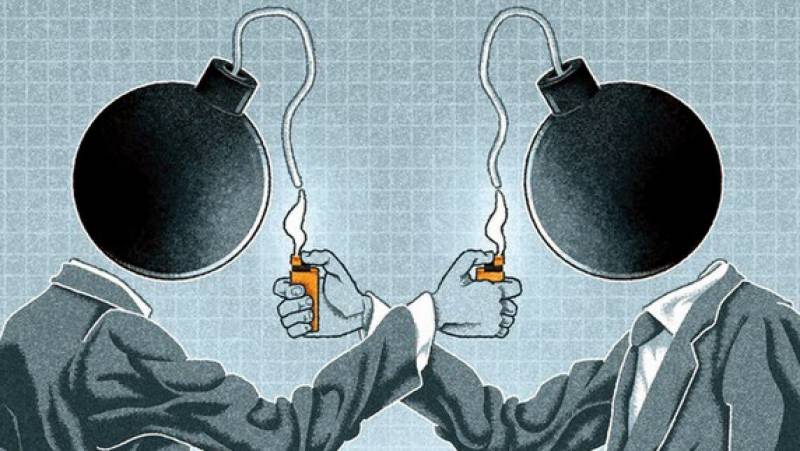
Mutual assured destruction (MAD) is a military strategy where the full-scale use of nuclear weapons by two or more opposing sides would cause the complete annihilation of both the attacker and the defender.

Donald Brennan, a strategist working at the Hudson Institute in 1962, developed this term. He meant it ironically, arguing that owning weapons capable of destroying society was itself an irrational act.
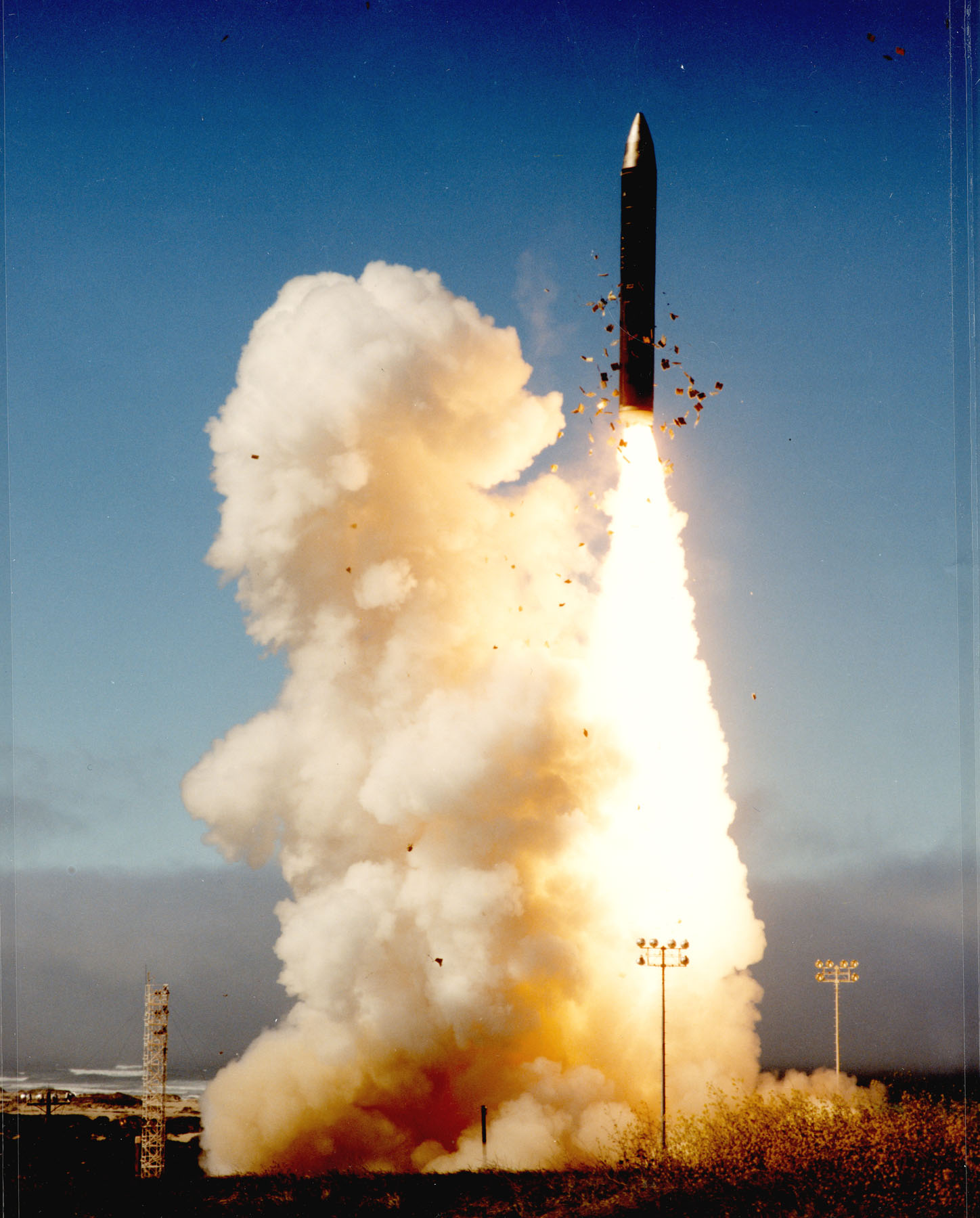
The "dead man's switch" is a system that would automatically launch a nuclear strike upon a target, even if the entire command structuure were wiped out in a first strtike. This ensures a second strike, and maintains MAD. The Russian Dead Hand system, is an early example of this.
The Doomsday Clock

The Bulletin of the Atomic Scientists developed the Doomsday Clock in 1947. It's a design that warns the public about how close we are to destroying our world with dangerous technologies of our own making. It is a metaphor, a reminder of the perils we must address if we are to survive on the planet.

In 2023, the Science and Security Board set the time to 90 seconds to midnight, largely because of the war in Ukraine, Russia's thinly-veiled threats to employ nuclear weapons, climate change (which the US Department of Defense says poses “immediate risks” to national security), biological threats (the COVID-19 pandemic demonstrated just how poorly prepared we are to deal with the possibility of someone weaponizing a biological agent), and disruptive technologies (hypersonic warheads, which can be armed with nuclear payloads, travel at over 4,000 miles per hour — think New York to Los Angeles in 33 minutes — and remotely-controlled drones can be piloted from half a world away).
Before 2020, the closest the hands were set to midnight was two minutes; in 1953, after the United States and the Soviet Union each tested their first thermonuclear weapons within six months of one another, and 2018, largely due to nuclear risk and the rising threat of climate change. But in 2020 the hands were set at 100 seconds to midnight.
Nuclear Detonation Scenarios
A: Don't make any plans for next month.
A: In Statesboro, there's a 50% probability of 3rd-degree burns.
A: One big nuke could wipe out 3.5% of the US population.
These scenarios include only one detonation. But if there were to be a nuclear attack, US military strategists agree that it would be a NATO vs. Russia scenario. Most models for this possibility say that the first move would be an "Alpha Strike," a preemptive attack targeting nuclear weapons and military assets. Then, in the most comprehensive model, the belligerents would target each other's 30 most populous cities and economic centers with five to 10 warheads for each target.
Smiley

Although each issue/chapter has its own recurring image, the most iconic image from Watchmen is the yellow smiley face that appears throughout the book. In his initial designs for the Comedian, Dave Gibbons realized there was no indication that the character had a sense of humor. He thought that this was strange for a character named "The Comedian," so he added the button to make it more clear, and it quickly became a symbol for the whole series.
When Moore saw the button, he immediately envisioned the Comedian's death, with a drop of blood marring the smiling, yellow face.
The use of repeating images (motifs) is something Moore borrowed from one of his literary heroes, William S. Burroughs. Burroughs was one of the most important members of the Beat Generation, which included authors such as Jack Kerouac and Allen Ginsberg. Beat writers rejected standard storytelling practices and narrative, and focused instead on spiritual quests, exploring Native American and Eastern religions, rejecting consumerism, and explicitly portraying the human condition. In their personal lives, they were committed to sexual liberation and exploration and experimentation with psychedelic drugs. Burroughs was one of the most bizarre and entertaining of the Beats.
The Failure of Politics
Richard Nixon was the first example of what NOT to do on live television, when he was humiliated by John Kennedy in the first televised presidential debates, in 1960. Kennedy was well-prepared, charismatic, and comfortable. Nixon was stumbly and sputtering, couldn't stop sweating, and looked suspicious.

Nixon sweating during a 1960 debate
But JFK was assassinated, and LBJ didn't want to run for reelection, so by 1968 Nixon felt it was his time. He wont the nomination, then handily beat Hubert Humphrey in the presidential election. He was obviously much more confident han in 1960, and he flashed his ubiquitous "V for Victory" gesture everywhere.
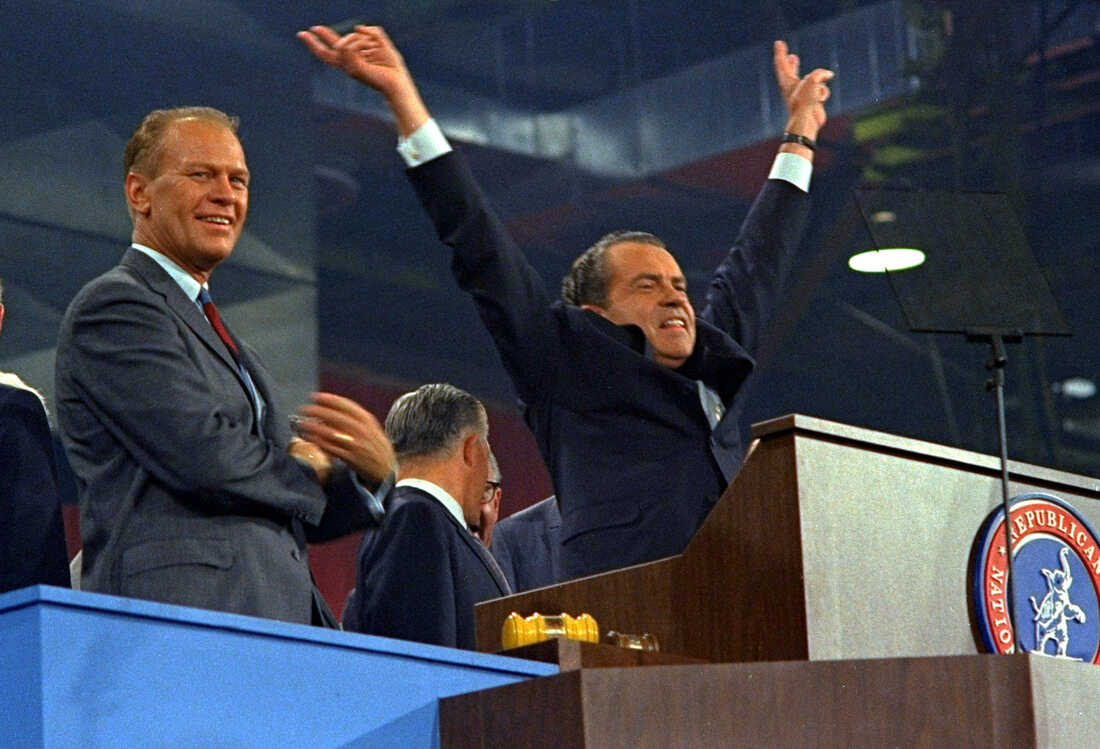
Nixon celebrating his 1968 nomination
Almost as soon as he was elected, Nixon began to use his political muscle to exact revenge on anyone he felt had ever held him in low regard, dismissed him, or made him look bad. His "Enemies List" was an open secret, and he was not afraid to bring the full force of the US government down on anyone who inconvenienced him. But some of his operatives were busted in 1972 after they broke into the headquarters of the Democratic Party to steal material that Nixon used in his campaign for reelection. After fighting a rear=guard action for over a year, as the noose grew ever-tighter around his neck, Nixon eventually became the only US President to resign. He was publicly disgraced, and exposed for the petty, paranoid, and un-presidential man that he was. He gave us the US "War on Drugs," something he and his staffers concocted to specifically target and incarcerate inner-city minorities and young counter-culture whites. He gave us double-digit inflation. He unleashed the realpolitik of Henry Kissinger on an unsuspecting world. Together they helped to overthrow democratically-elected governments all over the world (Chile, Pakistan, Bangladesh, Cyprus, among others).
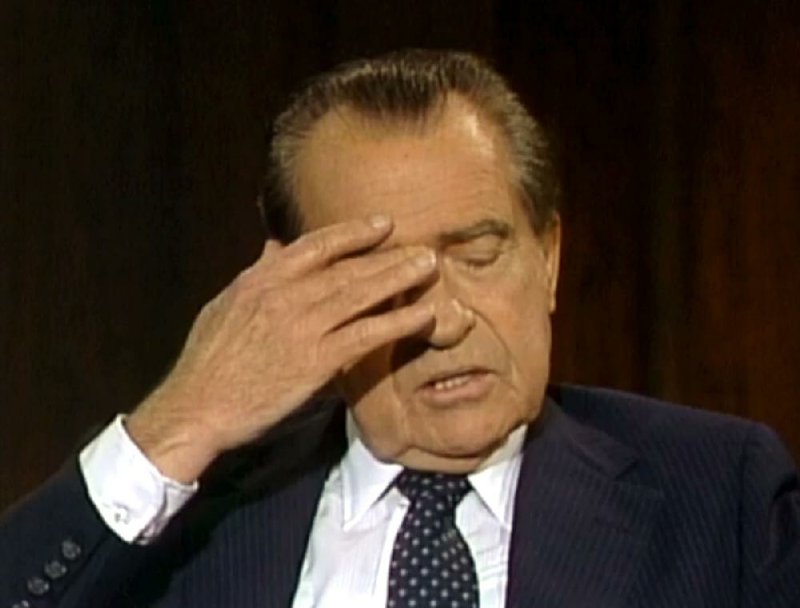
Nixon during his resignation speech
So why keep him as President for four terms in Watchmen? In a 2005 interview, Moore said that he originally was going to have Reagan as president, because Reagan's belligerence toward Russia and his championing of "trickle-down economics"—which even then was seen as benefitting only the wealthy at the expense of all others—were nothing but continuations of what Nixon did. But then he realized that there were people in the US who actually believed Reagan. So Moore chose Nixon because he was concerned using Reagan might turn off readers who supported the politician. His best line in the interview was, “You’re not going to get much argument that Nixon was scum.”
Fear Reflected in Popular Music
We could trace the Cold War and the fear of nuclear annihilation in popular music all the way back to the 1950s, but let's just stick with the early 1980s. This should give you a sense of the fatalism and fear that imbued the culture of the entire western world at the time.
The background imagery about popular music throughout Watchmen isn't very subtle. Moore wants to make sure you get the point, that all signs in popular media point to impending doom. Bands with names like Pale Horse and Krystalnacht are set to perform. This isn't even a Cold War; this is flat-out nuclear suicide.
I could list about a dozen more songs here, but let's just take a little sample:
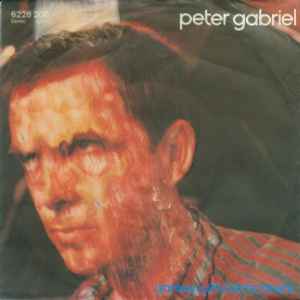
— Peter Gabriel
Hans plays with Lotte, Lotte plays with Jane |
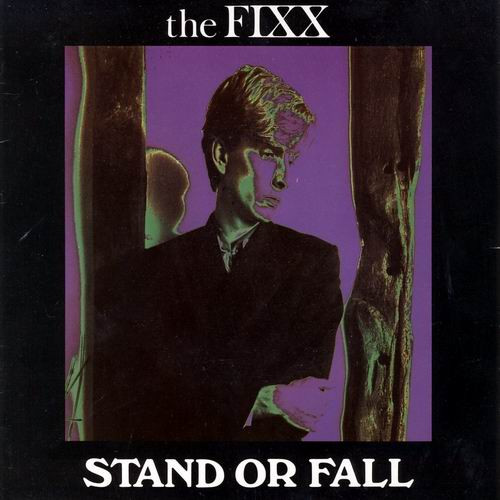
— The Fixx Both singles are from their Shuttered Room album, and both deal with the threat of nuclear Armageddon. Here' some of "Stand or Fall." Crying parents tell their children |
|
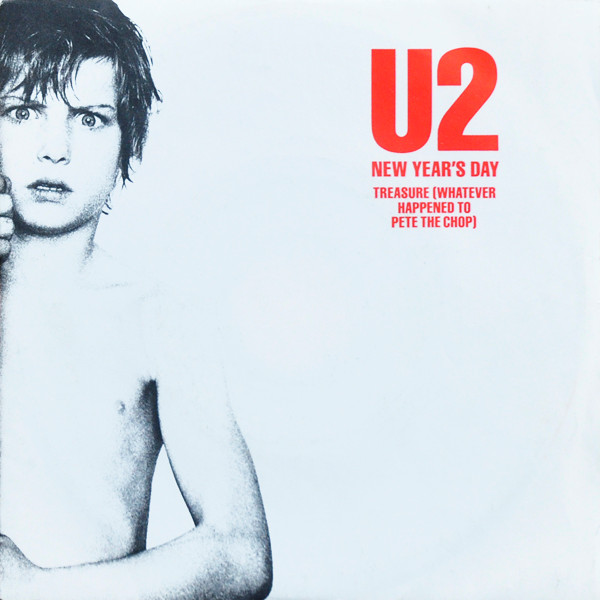
— U2 From their album War, U2’s “New Year’s Day” was written about Cold War tensions, particularly the Solidarity Movement against the communist government in Poland. All is quiet on New Year's Day |
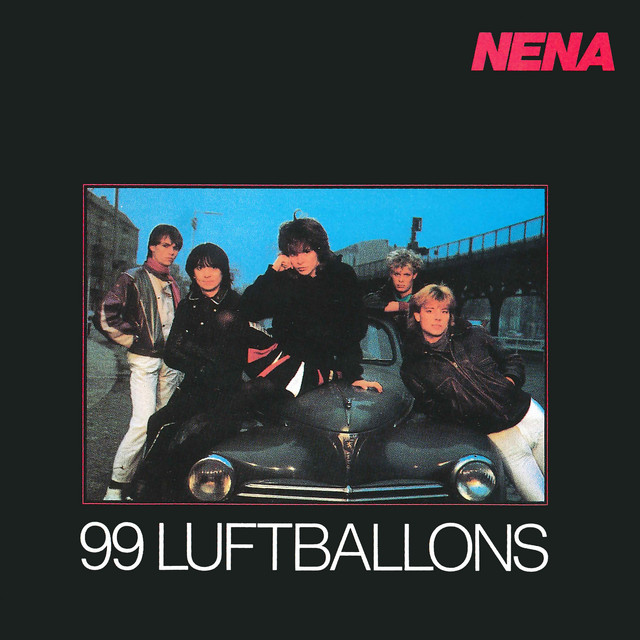
— Nena German group Nena had a surprise smash with “99 Luftballons,” a song about a nuclear war starting accidentally over the release of a bag of balloons which are mistaken for a weapon.
You and I in a little toy shop |
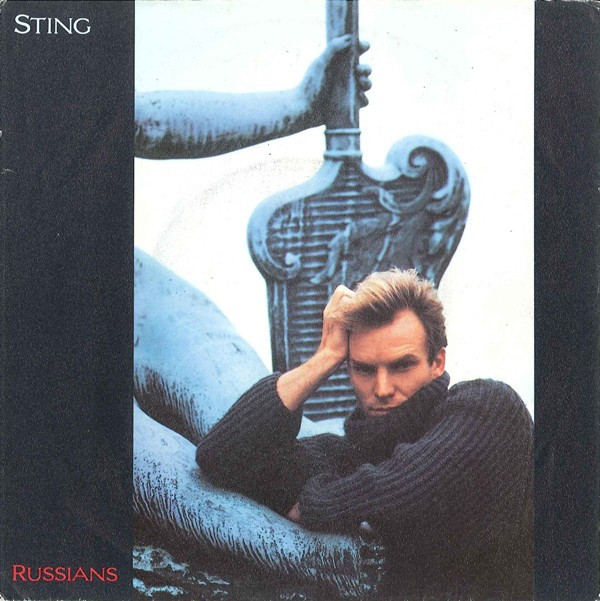
— Sting From his first solo album The Dream of the Blue Turtles, Sting considers the common humanity between the USSR and the West.
In Europe and America there's a growing feeling of hysteria |
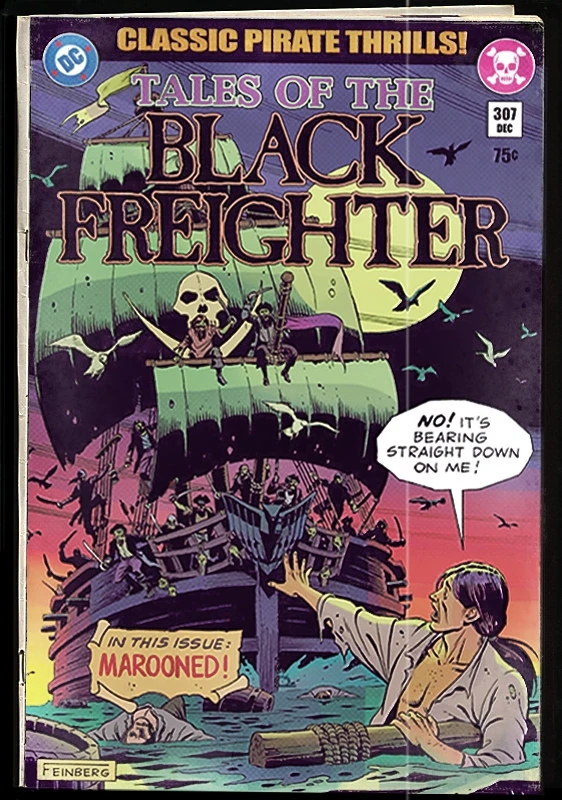
Comics Culture
Tales of the Black Freighter
Tales of the Black Freighter was a swashbuckling pirate-themed comic book series. It was first published in May of 1960 by National Comics, which later became DC Comics. The series ran for 31 issues. It tells the stories of sailors and other seafarers who damn themselves in one way or another and end up crossing paths with the titular phantom ship, collects the souls of evil men to serve its bloodstained decks. It is captained by a mysterious, demonic figure who is also perhaps an undead sailor.
As a parallel story in Watchmen, it serves as a commentary on the action of the main story line.
It is also the occasion for one of the most unusual duos in the novel, the news vendor Bernard and the young boy reading the comic, Bernie.
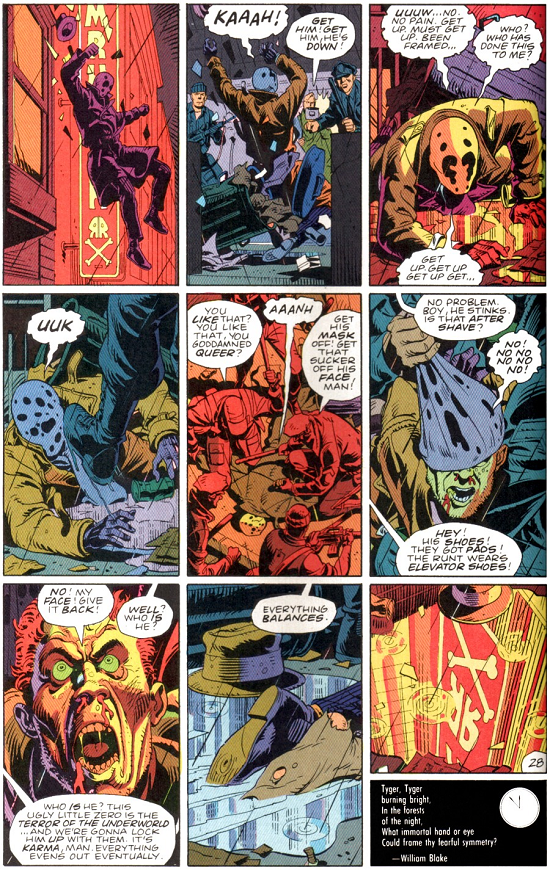
The Nine-Panel Grid
Although it's now ubiquitous in comics, the nine-panel grid was unusual at the time. Gibbons did the layout this way to make it easier to read and to cram more action onto each page.
It may look like a cookie-cutter design, but there are 322 possible variations to the nine-panel grid, if you combine the panels in different ways. Comics that work primarily with the nine-panel grid will use many of these throughout the story, both to give it more visual variation and to draw more attention to scenes that take place in the larger panels. So while it may appear to be severely limiting, this setup is actually freeing for both the author and the illustrator.
Charlton Heroes
DC Comics acquired the Silver-Age comics publisher Charlton in 1983. Moore had enjoyed Charlton Comics when he was growing up, and so he took the opportunity to repurpose many of his favorites Charlton heores into Watchmen.
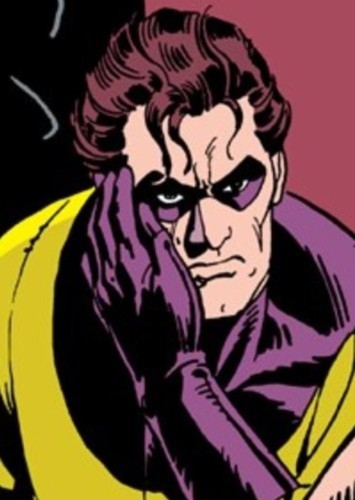 |
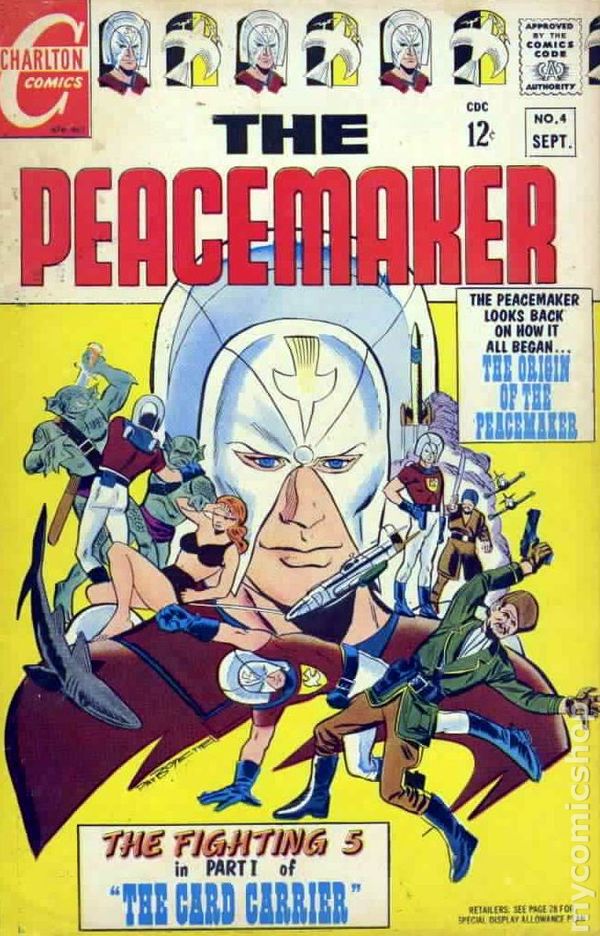 |
The Comedian is based on The Peacemaker |
|
 |
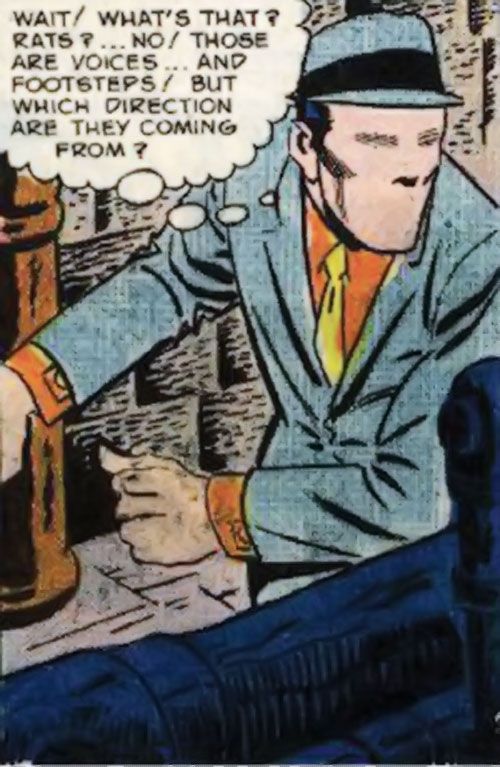 |
Rorschach is based on The Question |
|
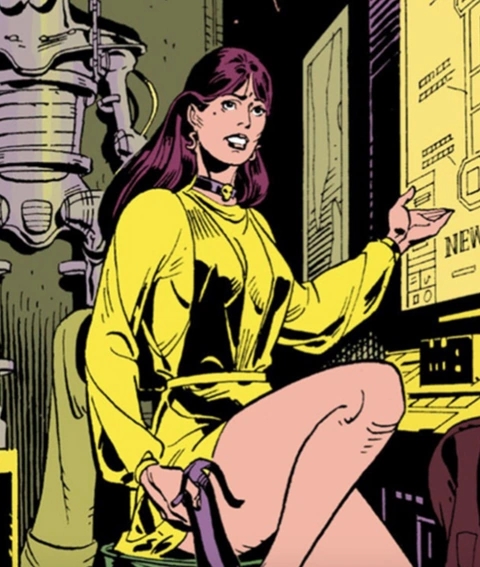 |
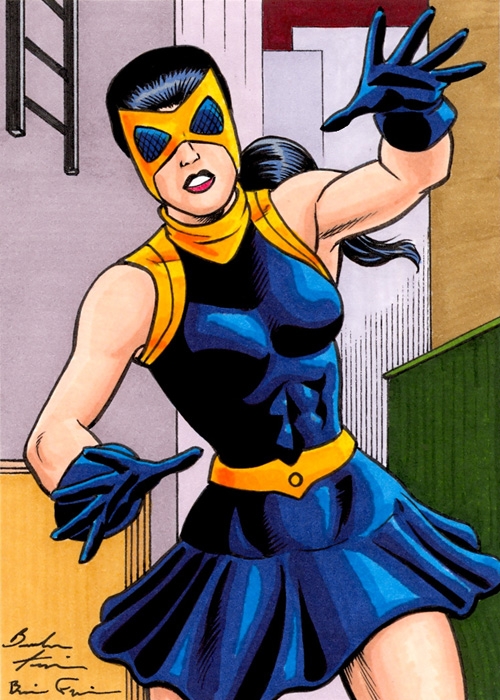 |
Silk Spectre II is based on Nightshade |
|
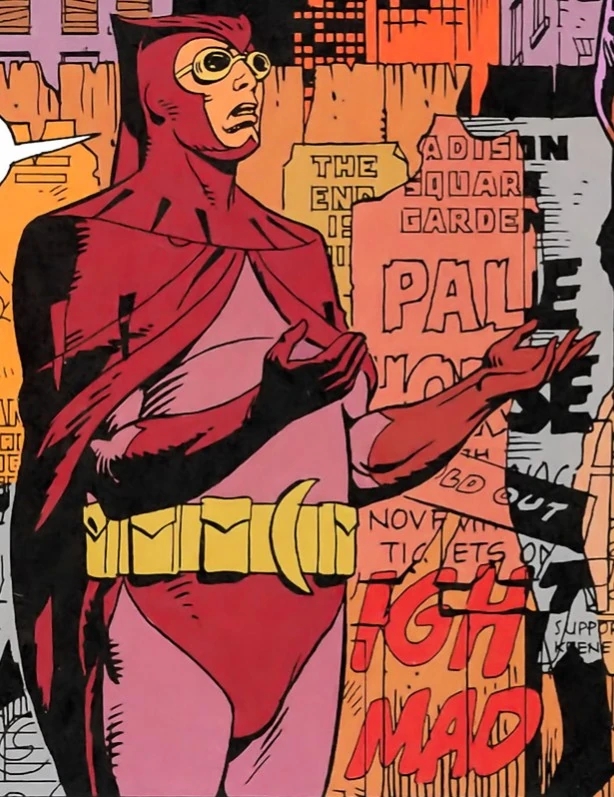 |
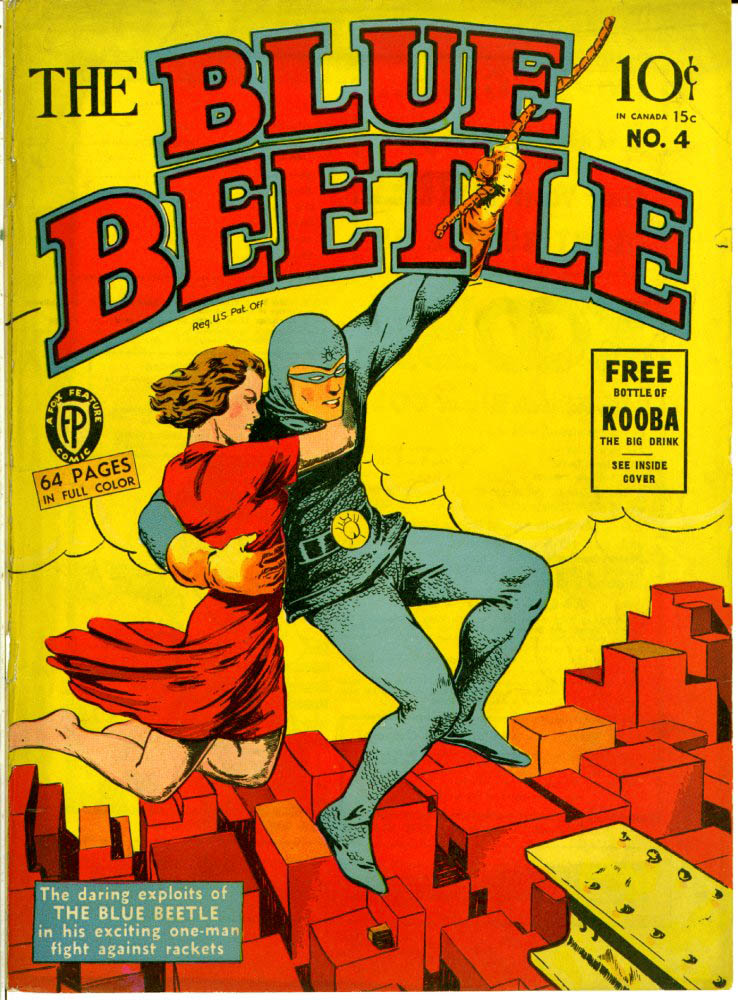 |
Nite Owl is based on Blue Beetle |
|
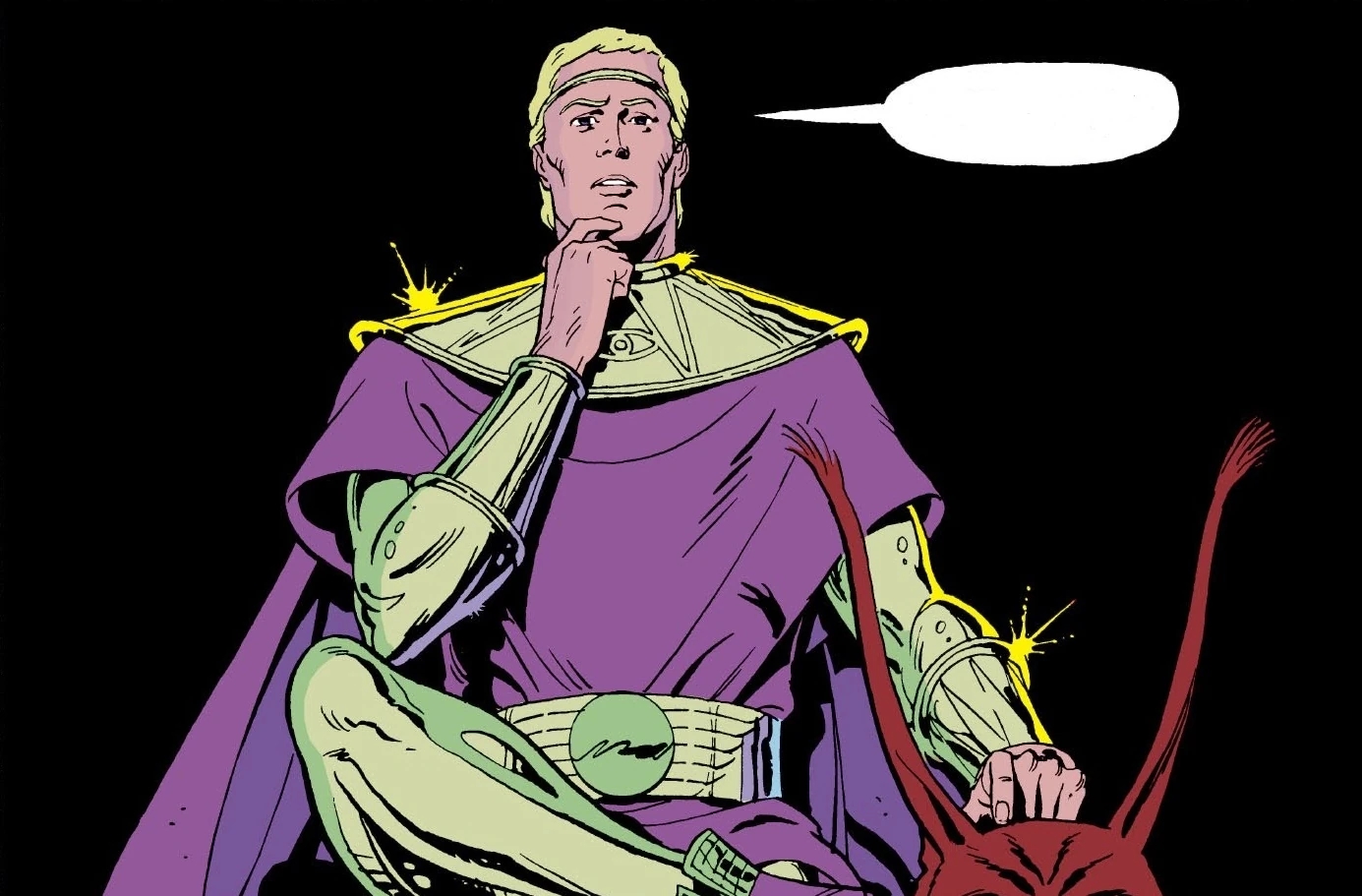 |
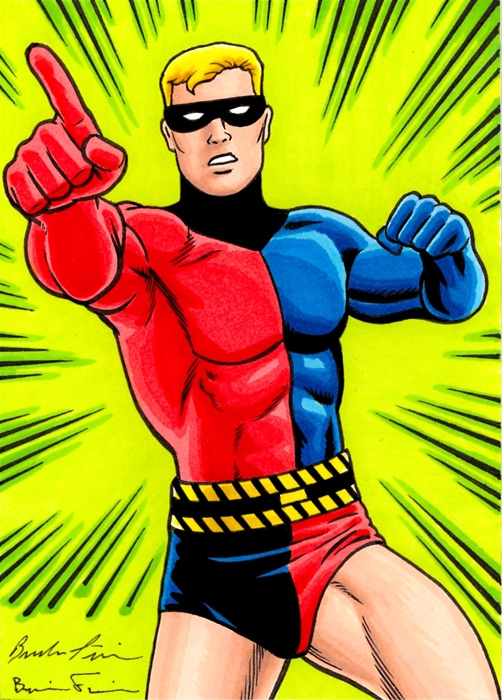 |
Ozymandias is based on Thunderbolt |
|
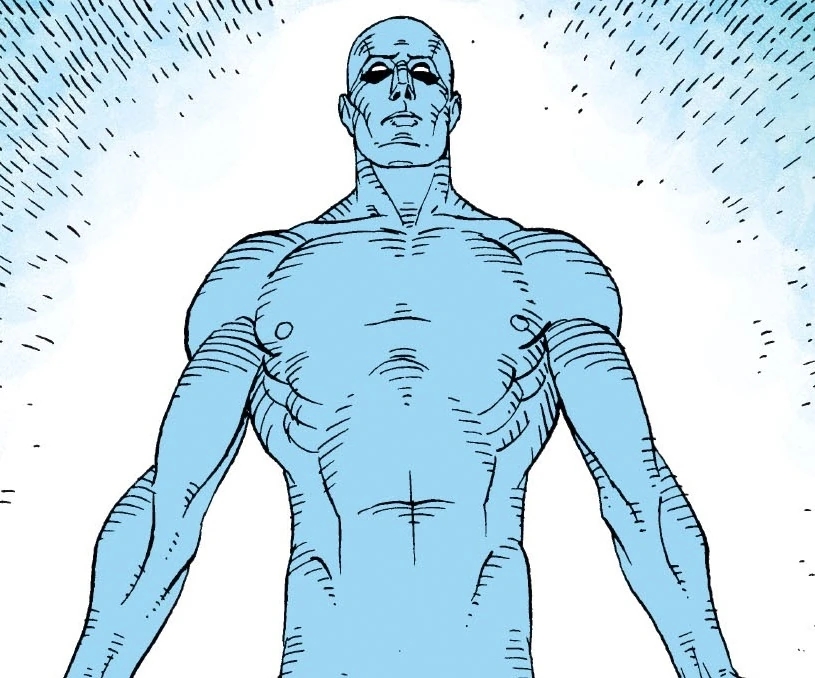 |
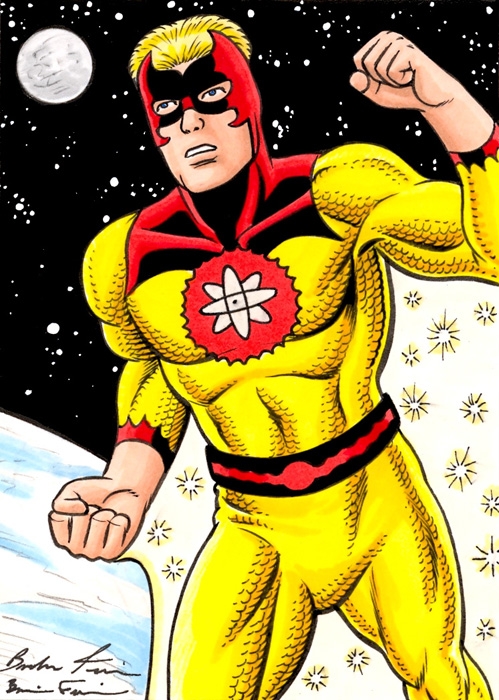 |
Dr. Manhattan is based on Captain Atom |
|